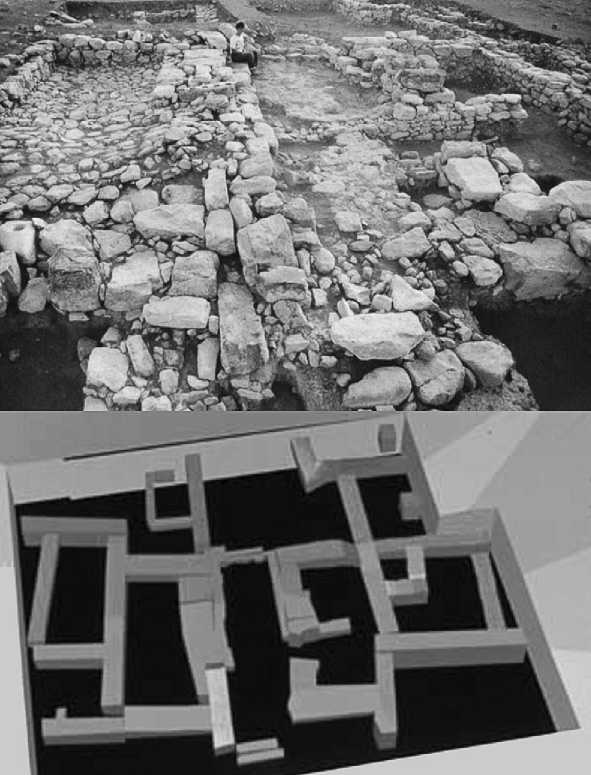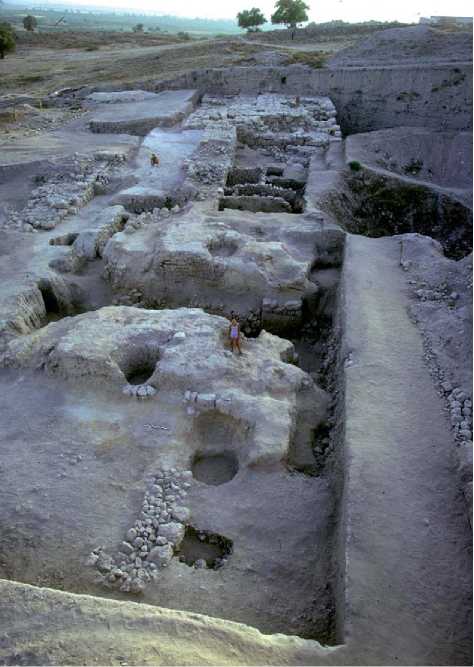Scholars have the task of explaining a transition from collapse to a revitalized urbanism, an urbanism reflecting a similar cultural complex spanning the region (and even into the Egyptian Delta). By the end of MB I, the reoccupied tells uniformly reflected the power and institutional control of elites, and texts verify the new regional kingdoms or territorial states of Mari, Yamkhad, Qatna, Hazor (and Tell el-Daba‘ in Egypt). The highly integrated nature of the culture has much to do with interregional exchange, but also ethnic ties. Texts indicate that new peoples across the Levant were in power positions, particularly Amorites and Hurrians, and Asiatics in Egypt (the Hyksos). The urban transformation in the south is difficult to explain without positing new peoples and urban stimuli from Syria.
Metals, Pottery, Defenses
Various attributes demonstrably support a highly integrated Levantine culture. Now that bronze superseded copper, distinctive forms like the notched chisel, the ‘duckbill’ axe, and socketed spearheads appeared. Metallurgical advances promoted a mastery of firing and kilns, resulting in a ceramic assemblage of well-fired, carinated, metal-like vessels with delicate ring bases, highly slipped and burnished and made on a fast wheel. Massive fortifications (Figure 11) of multiple walls, triple-entryway gates, moats, glacis, and enclosures, from Leilan to Mari

Figure 10 Khirbet Iskander, Jordan, EB IV gate and plan, to the N. Remission of the Khirbet Iskander Expedition, courtesy S. Richard.
To Ebla (44' thick ramparts) and Qatna to Hazor to el-Daba‘ are characteristic. Unique to the region are Tell Dan’s mudbrick arched gate, and the temple at Leilan (Shamsi Adad’s capital) with swirling designs on engaged columns.
Wealth and Elites
Ebla offers perhaps the prototypical ‘bit-hilani’ exemplar in Temple D, a fortified (‘migdol’) tripartite temple. Royal hypogeum tombs, found filled with exquisite artifacts and sculptures beneath the palace, foreshadow the LBA tradition at Ugarit. In the south, Syrian style ‘courtyard’ palaces are known (Kabri, Megiddo, Aphek, Tell Sera), although on a different scale than the monumental palace complexes in the north (Ebla, Mari, Alalakh). Widespread contacts may explain the variety of cult structures and ritual practices, for example, the Byblos Obelisk Temple (Egyptian influence); Gezer High Place, Nahariya outdoor sanctuary; even a miniature calf shrine at Ashkelon; and child burials in foundation deposit jars. The wealth of elites illustrates a growing internationalism, notable in tombs and hoards, like the heavily Egyptian-influenced Montet Jar metal hoard, from Byblos.
Mari
The splendid 300-room palace of Zimri-Lim at Mari - renowned in its time - symbolizes the burgeoning power of kings. A gold mine of information, its 20 000 tablets mention trading partners (e. g., Dan and Hazor in the south), political alliances, warfare, religion, and, of special import, relations with the pastoral nomadic tribes who throughout history played a critical role in the region. Most notable among Mari’s countless treasures are the Mari Standard, the ‘goddess with the flowing vase’, and the Investiture fresco, whose Minoan like style has also been noted in frescoes at Tell Kabri, Alalakh, and Tell el-Daba‘.

Figure 11 Overview of the Middle Bronze Age southern gate complex at Tell Gezer, c. 1700-1500 BC. Credit: Hebrew Union College Gezer Excavations Phase II. Courtesy Joe D. Seger.
Writings
In the south, for the first time, there was documented literacy (Akkadian cuneiform tablets). But, it was the MB/LB invention of the (pictographic) alphabet, ancestor to the Phoenician linear alphabet, that was truly revolutionary: inscriptions of this were found at Megiddo and carved on stelae by Canaanites working in Sinai at Serabit el-Khadem. Destruction and upheaval ended the period (c. 1550/1500); Hittites campaigned in the north and Egyptians expelled the hated Hyksos. Both, in the process, carved out LBA empires.




 World History
World History









